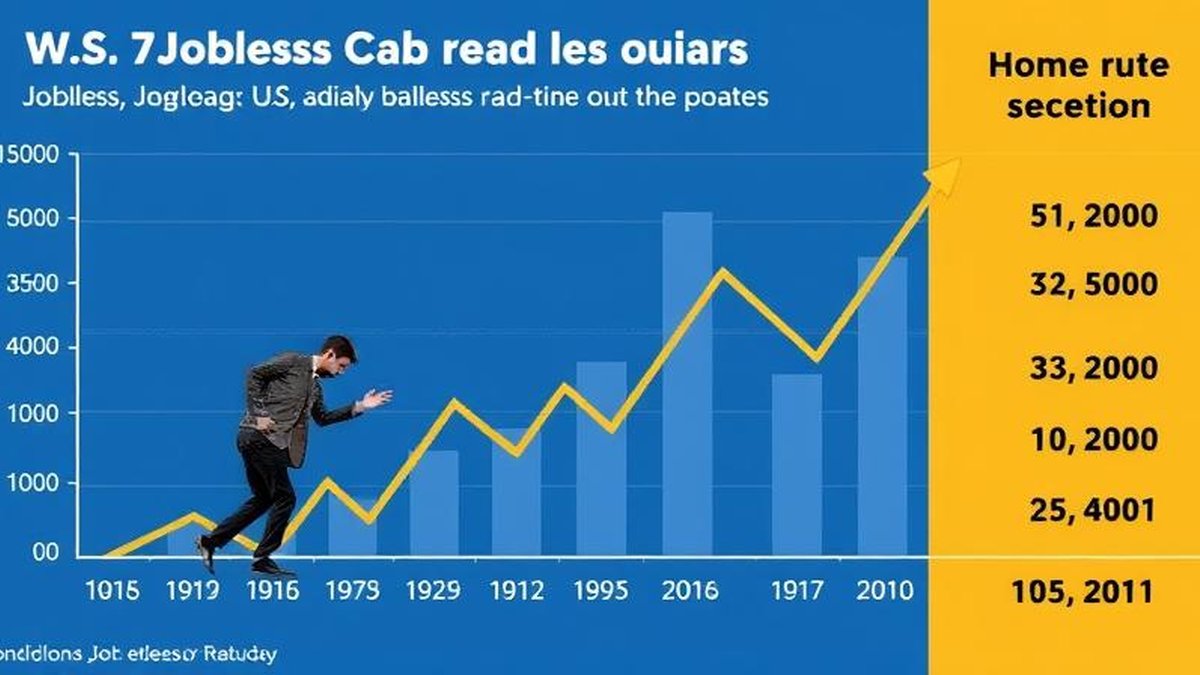U.S. Jobless Claims Rise, Prompting Markets to Reevaluate Fed Rate Cut Outlook
The latest data on U.S. initial jobless claims showed a modest yet unexpected increase, signaling early signs of potential cooling in the labor market. Although the labor environment remains historically tight, this uptick has stirred debate among economists and market participants over whether the Federal Reserve might move sooner toward easing monetary policy.
1. Interpreting the Data: Signs of Gradual Softening
1.1 A Modest but Meaningful Uptick
Weekly initial jobless claims rose by more than consensus forecasts, a move that caught analysts off guard after several months of stability. While the level remains low compared to historical averages, the change suggests that some firms are beginning to adjust staffing levels in response to slower demand and tighter financial conditions.
Economists caution that a single week of data does not establish a new trend. However, when viewed in the context of other recent indicators — including slower nonfarm payroll growth, declining job openings, and moderating wage pressures — it may point to a gradual rebalancing in labor dynamics after two years of exceptional tightness.
1.2 Supporting Indicators of a Cooling Labor Market
Beyond claims data, several complementary metrics reinforce the narrative of moderation. The JOLTS report recently showed a decline in job openings, while wage growth in key service sectors has decelerated. Regional surveys also indicate easing hiring intentions among small and medium-sized enterprises, particularly in interest-sensitive industries such as construction, manufacturing, and real estate.
2. Market Implications: Adjusting Fed Policy Expectations
2.1 Shifting Rate Cut Probabilities
Financial markets quickly responded to the jobless claims report by revising expectations for monetary policy. Futures pricing now reflects a higher probability of rate cuts in the latter half of the year, as investors anticipate that a softer labor market could give the Fed more room to support growth without reigniting inflation.
Yields on short-dated Treasury securities fell modestly as traders priced in a more dovish policy trajectory, while longer-duration bonds rallied in anticipation of easing financial conditions. Equity markets, particularly rate-sensitive sectors such as technology and real estate, reacted positively to the prospect of lower borrowing costs.
2.2 Balancing Growth and Inflation Risks
The Fed faces a delicate balancing act. Policymakers aim to achieve a durable return of inflation to the 2% target while avoiding unnecessary damage to employment. A sustained rise in unemployment claims could increase pressure on the Fed to pivot more quickly, but officials have repeatedly stressed the importance of consistent evidence across multiple data points before committing to policy changes.
For now, central bankers appear content to hold policy steady while monitoring whether the recent data reflects noise or the beginning of a broader trend.
3. Broader Economic Context: Deceleration Without Recession?
3.1 Gradual Cooling vs. Sharp Slowdown
Most economists still view the labor market as resilient, with unemployment hovering near multi-decade lows and participation rates stable. The current narrative suggests a soft landing scenario — where demand cools enough to reduce inflationary pressure without triggering a deep downturn. However, persistent weakness in hiring or a sustained increase in claims could challenge that view.
In recent months, corporate commentary has highlighted selective hiring freezes and restructuring efforts, particularly in tech and finance, even as service sectors continue to absorb labor. This uneven cooling may complicate the Fed’s job of calibrating policy appropriately across sectors.
3.2 Implications for Inflation and Consumption
If the labor market softens further, wage growth could continue to moderate, easing inflation pressures in labor-intensive industries. That dynamic might help the Fed reach its inflation target more comfortably, though it could also weigh on consumer spending — a key driver of U.S. GDP. Retail sales and credit card data will be closely watched for signs of shifting household behavior.
4. Outlook: Data-Dependent Path Forward
4.1 Key Upcoming Reports
Investors and policymakers alike will focus on upcoming employment reports, including nonfarm payrolls and average hourly earnings data, to determine whether this week’s claims increase is part of a broader cooling trend. A consistent rise in claims over several weeks would strengthen the case for earlier policy easing, while stabilization could reaffirm the Fed’s current wait-and-see stance.
4.2 Fed Communication and Market Sensitivity
Recent speeches from Fed officials emphasize caution and data dependency. While some members acknowledge progress in disinflation, others warn against premature loosening. Markets remain highly sensitive to labor data, with each incremental shift influencing expectations for the timing and magnitude of potential rate cuts.
Ultimately, the modest rise in jobless claims adds nuance to the macroeconomic picture — suggesting progress toward rebalancing but not yet signaling weakness severe enough to guarantee imminent policy shifts. For now, investors will continue to recalibrate their positions in line with evolving labor and inflation dynamics.
For continued updates on labor trends, inflation data, and Fed policy decisions, visit our Altcoin Analysis | Exchanges | Apps & Wallets
